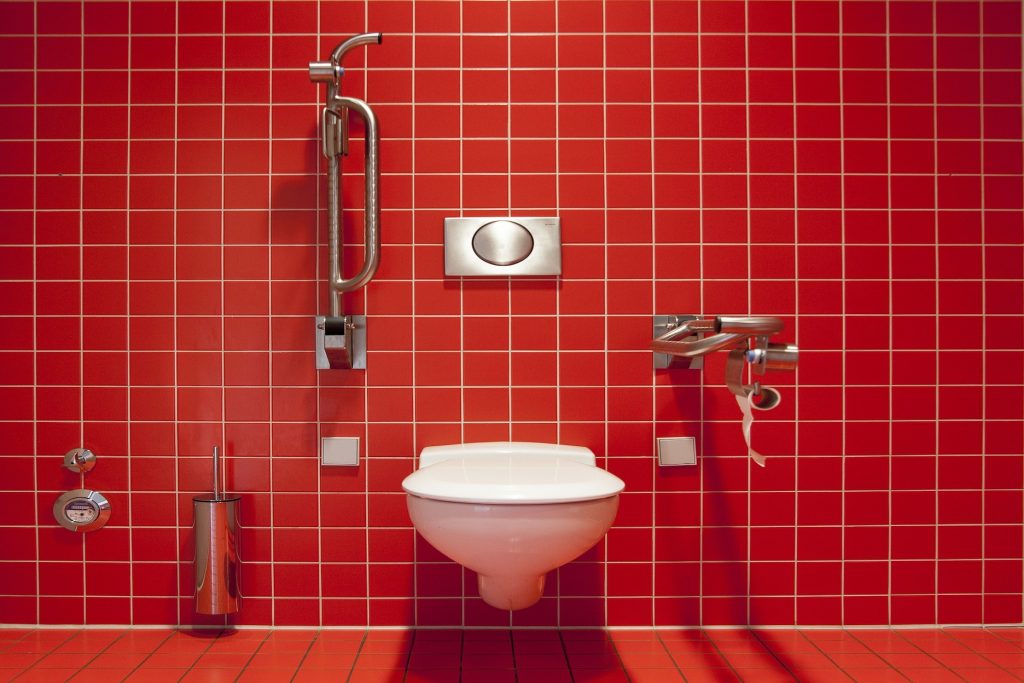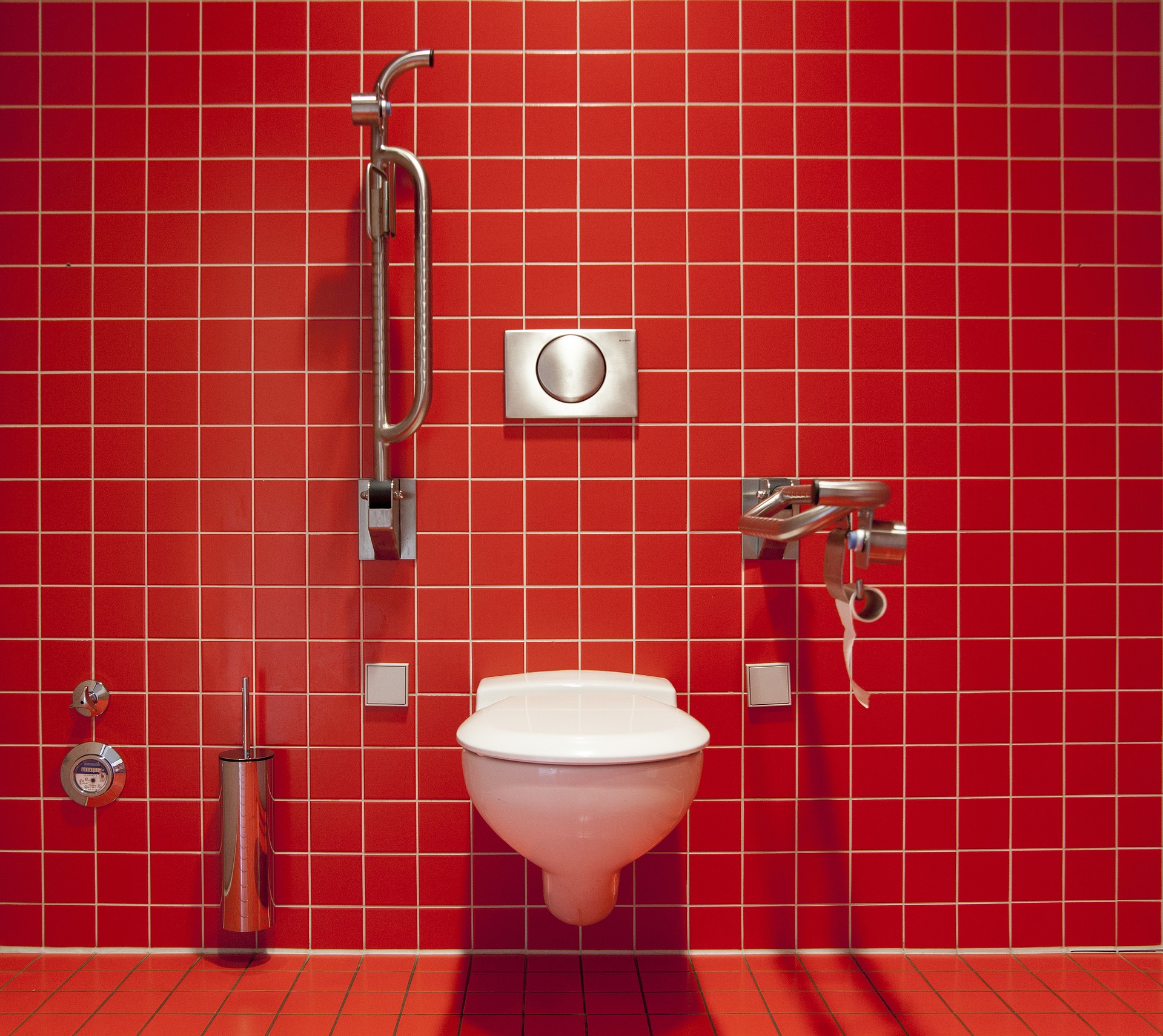Written by Henry Lin and Edited by Rasheed Majzoub

The toilet, an appliance familiar to all, is necessary within every household and public building with running water. Every component of it–from the flush and fill valves to the toilet seat and toilet bowl–appears to serve a specific purpose except for one: the toilet lid. However, apart from its general aesthetic purposes, the lid of a toilet plays an important role in limiting the spread of diseases in bathrooms.
The powerful current of water generated in each flush causes intense splashing along with the formation and bursting of bubbles that ultimately release two forms of droplets. Splashing releases large droplets of water containing particles of waste and contagious germs onto the toilet seat, while the bursting of bubbles releases many smaller water droplets into the air that quickly evaporate, leaving behind “droplet nuclei”–dense compositions of airborne waste and pathogens [1]. These aerosolized droplet nuclei produced from toilet flushes are commonly referred to as “toilet plumes.”
Unlike the large droplets produced from flushing, there are still conflicts about whether or not airborne droplet nuclei can transmit disease. The majority of the disagreement stems from the difficulty in obtaining evidence that small droplets can transmit disease on their own, since an individual often comes into contact with both small and large droplets [1]. However, recent research shows that droplet nuclei are consistently able to host pathogens such as bacteria and can continue to be able to spread disease for long periods of time while airborne [2]. The ability to not only carry disease but also keep them airborne for long periods of time supports the argument that these bio-aerosols can transmit disease. In one study, a toilet that contained Clostridium difficile (commonly known as C. diff, a bacteria that causes diarrhea and colon inflammation) released the bacteria 25 cm into the air when flushed [2]. It took 90 minutes for the bio-aerosol concentration to decrease 11-fold, placing many individuals at risk of contracting the disease within that long time frame.
The dangers of toilet plumes can be seen in continued studies, where multiple types of bacteria like Pseudomonas fluorescens (a bacteria with fluorescent properties used for easier detection) and E. coli are able to survive the strong current of a single flush and retain their presence in the toilet even after multiple flushes [3]. In one instance, researchers were still able to detect the presence of these bacteria after 24 consecutive toilet flushes. Another experiment conducted in 2000 seeded Salmonella bacteria in a toilet and proceeded to measure the concentration of bio-aerosols produced during each flushing. After 50 days, the experiment revealed that bioaerosols continued to generate because the bacteria were able to survive for long periods of time by attaching themselves along the surface of the bowl under the waterline [3]. The ability to persist throughout multiple flushes and remain in toilet water for such a long time increases the danger of toilet plumes as persistence allows for continued bio-aerosolization that could transmit potential diseases.
Given the dangers toilet plumes present to the general public, many steps need to be taken to minimize their risks of transmission. For one, urban planners should consider the types of toilets placed in public settings. There are three different types of toilets commercially available–high efficiency (HETs), Pressure-assisted (PATs), and Flushometer (FOMs). FOM toilets, with the strongest flush and greatest generation of aerosols, are the most common form of toilet in the public, placing many individuals at greater risk of disease transmission by toilet plumes [1]. Institutions should also conduct more research to determine if bioaerosols can transmit diseases on their own, effectively ending any doubts in order to spur change. Individuals can minimize their own risks from toilet plumes by adding disinfectants, such as chlorine bleach, to the toilet before flushing to decrease the amount of contamination created from flushing [4]. When stepping into a public bathroom, individuals should be careful about touching the common places for bioaerosols to land on (flush handles, doors, faucet handles, and soap dispensers) and wash their hands if they do [5]. Finally, the best and most efficient solution is to simply close the toilet lid and prevent toilet plumes from traveling out of the toilet.
References:
- Johnson D., Lynch R., Marshall C., Mead K., Hirst D. (2013). Aerosol Generation by Modern Flush Toilets. Aerosol Science and Technology, 47:1047-1057.
- Best E. L., Sandoe J. A. T., Wilcox M. H. ( 2011). Potential for aerosolization of Clostridium difficile after flushing toilets: the role of toilet lids in reducing environmental contamination risk. Journal of Hospital Infection, 80:1-5.
- Johnson L. D., Lynch A. R., Villanella M. S., Jones F. J., Fang H., Mead R. K., Hirst L. V. D. (2017). Persistence of Bowl Water Contamination during Sequential Flushes of Contaminated Toilets. Journal of Environmental Health, 80:34-49.
- Sassi P. H., Reynolds K. A., Pepper I. L., Gerba C. P. (2018). Evaluation of hospital-grade disinfectants on viral deposition on surfaces after toilet flushing. American Journal of Infection Control, 46:507-51.
- Moyer M. Melinda. “The Right Way to Use a Public Bathroom (to Avoid Getting Sick).” The New York Times, The New York Times Company, 2019, www.nytimes.com/2019/04/17 /smarter-living/using-public-bathrooms.html.
